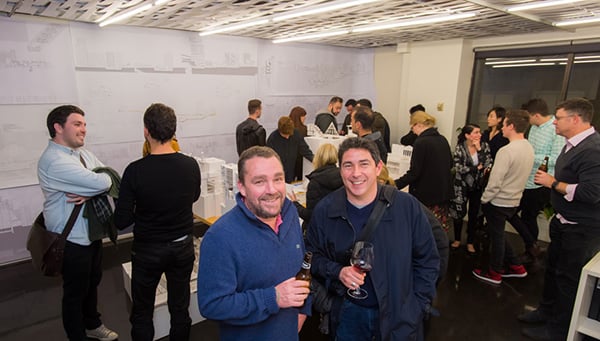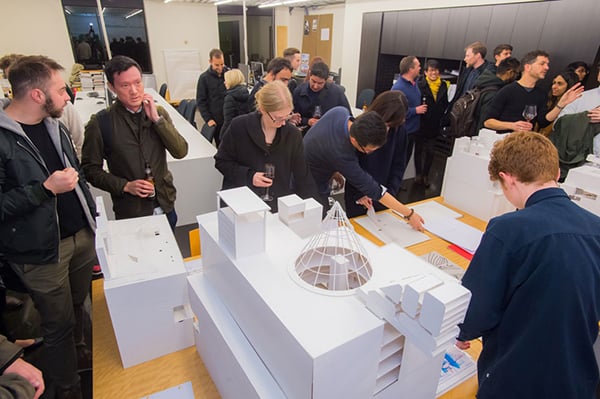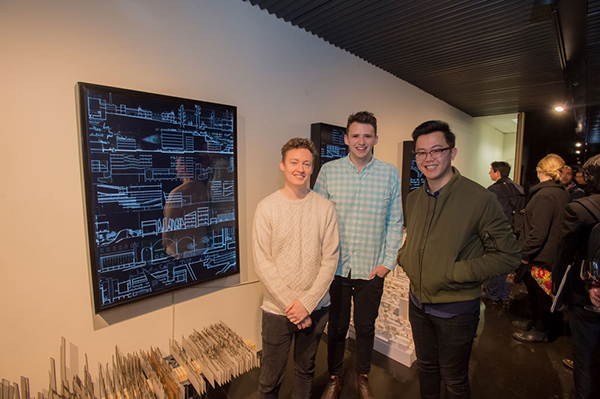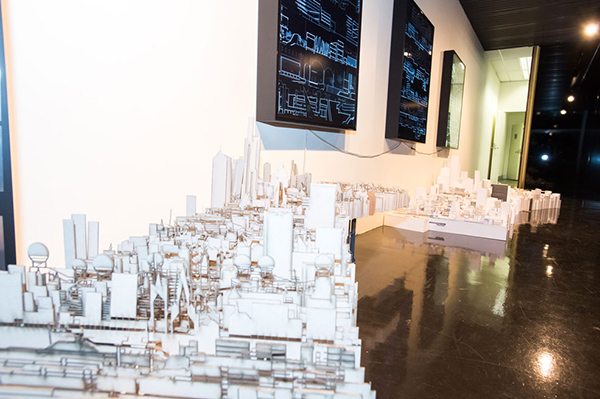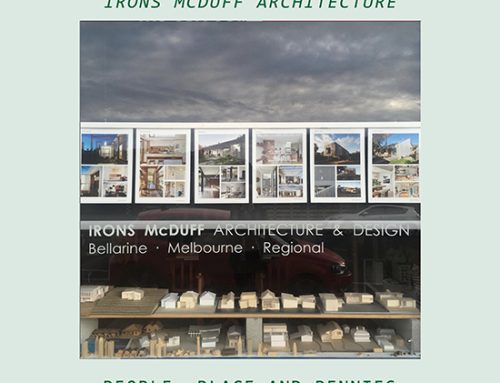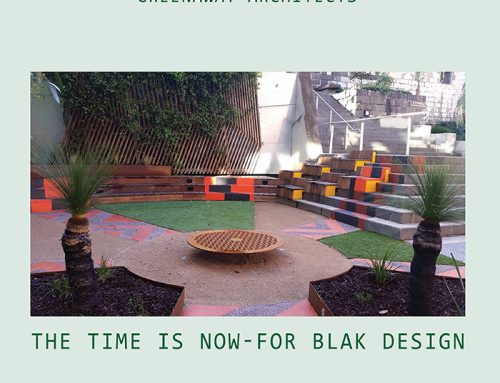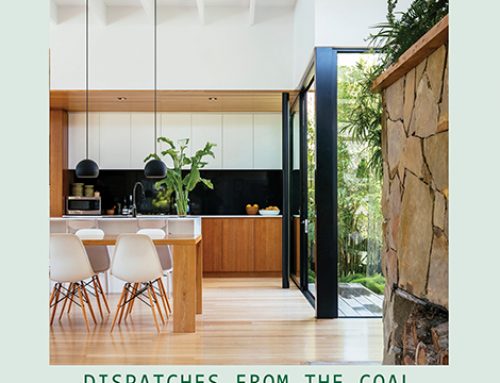On Friday 14 July Deakin Architecture Students exhibited there work from unit SRD763 entitled The Exquisite Corpse Exhibition. More than 100 people attended the exhibition held in Melbourne at the offices of TAUT Architecture in Collins St including students, Deakin graduates working in different firms around Melbourne, practicing architects and academics from Deakin and other universities.
The crowd enjoyed the exhibit and finished with drinks and refreshments kindly supplied by the team at TAUT Architecture. http://taut.net.au/
About the Exquisite Corpse Exhibition
“Le cadavre exquis boira le vin nouveau” (Surrealist Group, 1925)
The impact of the insertion of large public transport infrastructures in dense urban contexts goes far beyond predictable functional alterations and superficial aesthetic considerations about the built fabric. The increasingly conflictive balance between the public and private realms is re-established in an often not completely foreseen cascade effect initiated by the sudden increase of density, diversity and intensity of use associated with these type of initiatives. The new underground line below Swanston Street will challenge the resilience of the heart of Melbourne requiring a profound reflection on the redefinition its future.
The Exquisite Corpse showcases the contribution of Deakin´s fourth year architecture students to this essential debate that will necessarily have to include all disciplines related to the built environment. Liberated from the constraints and urgencies of professional practice, architectural education explores alternatives and visions that broaden and enrich the discussion on the future of Melbourne´s CBD.
In Exquisite Corpse: Writing on Buildings (1994), Michael Sorkin presented a conceptual/political reading of the urban phenomena, highlighting the influence of multiple agents contributing to the diffuse, complex and ever-changing definition of urban environments. The work presented in this exhibition incorporates this interpretation of the city, but also the more literal utilization of the sequential creative procedure proposed by the avant-guard surrealist poets in the first decades of the 20th century.
The intentional use of an ‘exquisite corpse’ design methodology to define the physical materialization of the built fabric instead of a more conventional planning strategy, intends to emulate the effect of time in the evolution of the urban environment. The method permits the operative incorporation and manipulation of random, unstable and unpredictable processes in design. Existing and new, real and fictional, public and private and programmed and non-programmed realities coexist in this exquisite corpse, generating a hypothetical, provisional and textural representation of the future of the city, capturing some of its distinctive diverse and vibrant nature.

